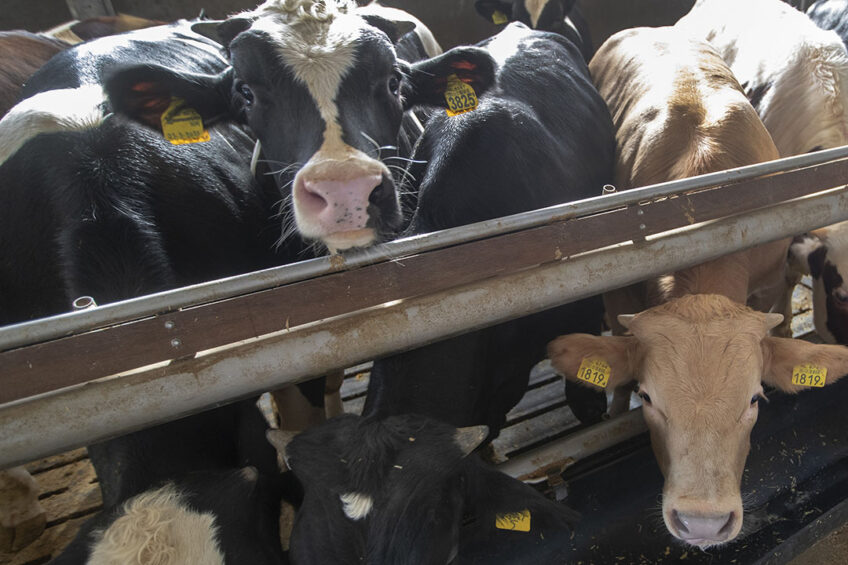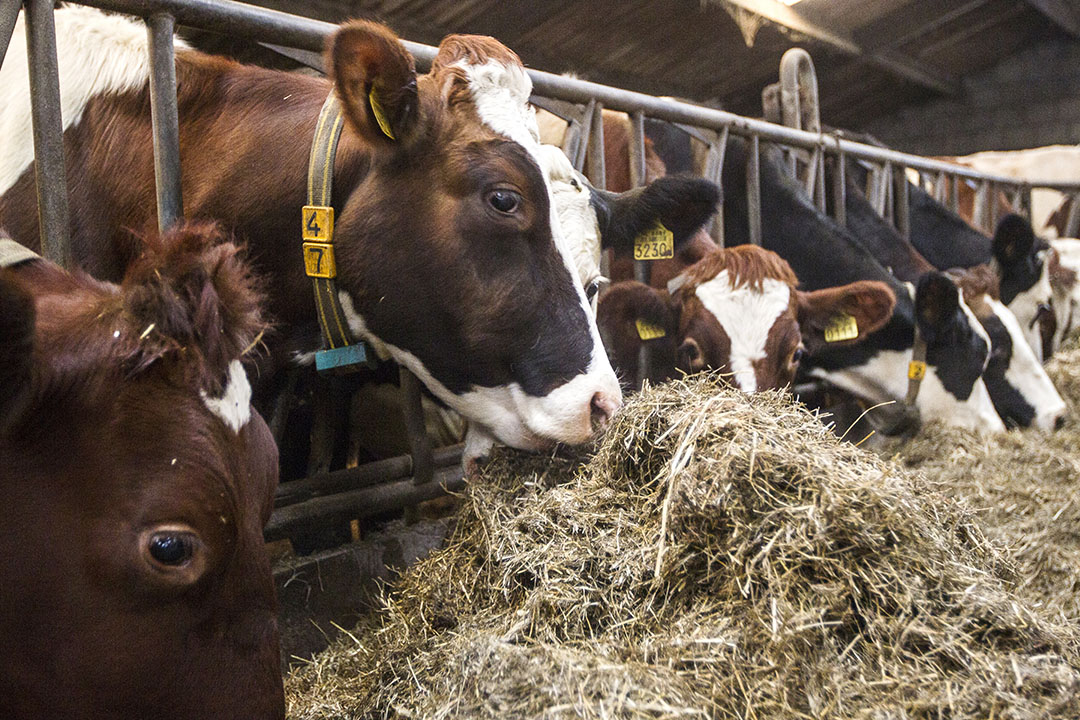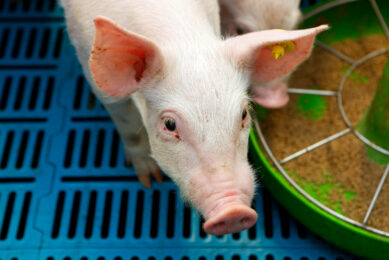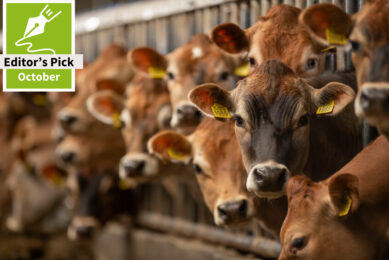Probiotics: A natural health and performance modulator

It has been shown that probiotics supplementation can improve the health and performance of dairy cows and calves, serving as an alternative to antibiotics.
The dairy industry is a dynamic sector that is critical to satisfy the increasing demand for dairy products. Due to the growing pressure of the global population, antibiotics have been administered as growth promoters to increase production by limiting the effects of pathogenic infection in dairy cattle. However, the non-therapeutic use of antibiotics in livestock diets was banned by the European Union in 2006 due to increasing safety concerns regarding antibiotic resistance, antibiotics release into the environment and the persistence of chemical residues in animal products.
Probiotics as an alternative
As a result, probiotics have been developed as alternative feed additives to the prophylactic use of antibiotics. Probiotics are described as live microorganisms that, if administered in adequate amounts, promote gastrointestinal tract health, enhance dry matter intake, improve mucosal immunity, increase production performance, reduce methane production, and minimise energy loss in ruminants.
Why is microbiota important?
Dairy cattle consume plants that are the source of complex polysaccharides, hemicellulose, cellulose, and lignin. However, because of the lack of an enzymatic system to degrade polysaccharides, ruminants need the microbiota in their gastrointestinal tract to hydrolyse these compounds to produce energy. Gastrointestinal tract microbiota has a symbiotic relationship with dairy cattle and uses the feed consumed by dairy cattle for survival. However, the microbiota is sensitive and can be affected by slight alterations in the gastrointestinal tract environment.

Gastrointestinal tract microbiota in calves
In newborn calf the gastrointestinal tract is sterile, and microbial colonisation starts immediately after birth. As the calf grows to maturity, a complex and dynamic microbial ecosystem with high densities of living bacteria, archaea, protozoa, fungi, and bacteriophages is established in the gastrointestinal tract. The microbiotas in calves change substantially during the first 12 weeks of life in accordance with the metabolic and physiological development of the gastrointestinal tract which leads to an increase in the susceptibility of calves to pathogen colonisation and subsequent diarrhoea.
Gastrointestinal tract microbiota in the adult cow
Dairy cattle’s gastrointestinal tract hosts a diverse array of microbial species which are directly or indirectly essential for their health and performance. Gastrointestinal tract microbes in ruminants are classified as bacteria, archaea, protozoa, fungi, and bacteriophages.
Bacteria represent most gastrointestinal tract microbiota, and they secrete various enzymes to ferment and degrade plant polymers. There are more than 200 species of bacteria, and their population is about 1010 to 1011 per gram.
Archaea population is up to 109 per gram and anaerobic methanogens make up most of the archaea, constituting about 0.6-3.3% of the total gastrointestinal tract microbiota.
Protozoa are unicellular organisms bound by pellicle or cuticle in the rumen and their population ranges from 107 to 109 per gram. Most of the protozoa are anaerobic, but very few species are thought to sequester oxygen.
Anaerobic fungi present in the gastrointestinal tract range from 103 to 106 per gram with an explicit capacity of lignocellulose degradation and proteolytic activity. Fungi contribute to 20% of the overall microbiota in the rumen.
Bacteriophages, which are obligate parasites, play a significant role in gastrointestinal tract microbiota. Bacteriophages infect and lyse bacteria after replication to maintain the overall bacterial population in the host digestive environment.
Impacts of probiotics supplementation in calves
Probiotics such as lactic producing bacteria (e.g., Enterococcus and Lactobacillus) stabilise gastrointestinal tract microbiota, reduce the adherence of pathogens to the gastrointestinal tract mucosa and decrease the risk of pathogen colonisation in calves. Supplementation of microorganisms with feed from birth in a preventive manner allows the incorporation and establishment of probiotic strains together with the microbiota of calves. Yeast culture improves the growth of calves through increased average daily weight gain, as well as pre-weaning and weaning weights by 13.5%, 11.03% and 20.94%, respectively. In addition, a stable microbial load of Lactobacillus species improves weight gain and immunocompetence in young calves. However, the efficacy of probiotic strains depends on whether calves are raised under healthy conditions.
Impacts of probiotic supplementation in the adult cow
Probiotics improve live weight gain in dairy cattle by increasing nutrient utilisation, improving nitrogen retention, and reducing the excretion of essential nutrients. Lactate producing bacteria such as Enterococcus and Lactobacillus limit acidosis in high-concentrate-fed animals, especially feedlot cattle.
Benefits of yeast in diet
Addition of yeast culture to the diet improves productivity in both heifers and lactating cows, including:
Improves the fermentation process in the rumen and reduces the production of methane gas.
Yeast cells provide growth factors for gastrointestinal tract microbiota, stabilise ruminal pH, scavenge oxygen, and create the anaerobic environment required by ruminal microorganisms.
Supplementation of live yeast enhances fibre, degrading the bacteria population, improves fibre digestion, and makes structural carbohydrates such as cellulose and hemicellulose more available as an energy source for the host animals.
Reduces meal intervals and stimulates forage feed intake and nutrient digestibility.
Impacts the feeding behaviour of dairy cows through increased feeding frequency.
Optimises rumen function, resulting into more nutrient bioavailability, which consequently improve the milk production performance while ensuring the digestive comfort of the dairy cow.
However, the extent of improvement in milk production with yeast supplementation depends on the stage of lactation, which might be higher in early or late lactation.
Concluding remarks
In dairy cattle the composition of gastrointestinal tract microbiota changes due to various factors such as diet, age, stress, and environmental factors.
Research studies have demonstrated that probiotics create a positive balance in gastrointestinal tract microbiota; however, the dynamics and functions of the gastrointestinal tract microbiota, the interaction among various microbes, and the relationship between microbes and host cells need to be examined in more details.
Further research is required to provide deeper insights into the effects of health-improving diets for dairy cattle by better characterising and understanding the functionalities of probiotics on the balance of the gastrointestinal tract microbiota.
References upon request











